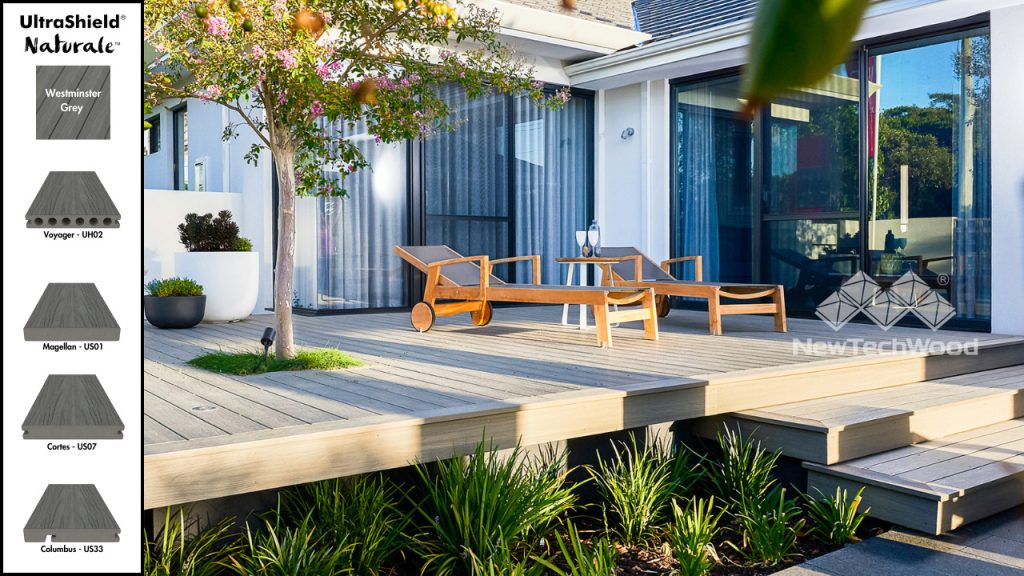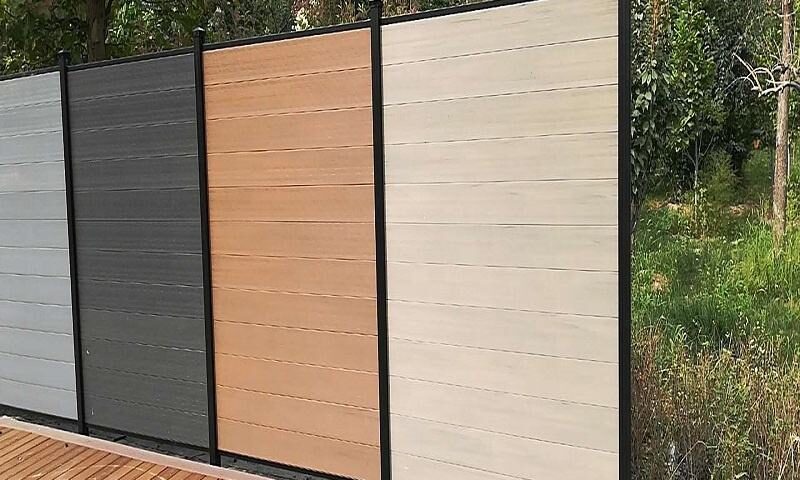
WPC Manufacturers in China: Exploring Innovation and Development of Industry Leaders
June 17, 2022
Introducing the Revolutionary Seamless Decking Solution
July 1, 2022When it comes to choosing fencing for your property, the debate often boils down to two popular options: traditional wood and wood-plastic composite (WPC). Both have loyal advocates, and each material brings its own set of strengths and compromises. Let’s dive into the real-world pros, cons, and hidden trade-offs of these fencing materials—no jargon, just practical insights to help you decide what works best for your home, budget, and lifestyle.
The Basics: What Are You Actually Buying?
Traditional Wood Fencing
Wood fencing is the classic choice. Think cedar, redwood, or pressure-treated pine—materials that have framed backyards and gardens for centuries. There’s a reason it’s lasted this long: wood looks timeless, smells earthy, and blends seamlessly into natural landscapes. But here’s the catch: not all wood is created equal. Cedar and redwood are naturally resistant to rot and insects, while cheaper pine relies on chemical treatments (like copper-based preservatives) to survive more than a few years.
WPC Fencing
WPC, or wood-plastic composite, is the newer kid on the block. It’s made by mixing recycled wood fibers (sawdust, essentially) with plastic polymers—often repurposed milk jugs or grocery bags. The result? A material that tries to mimic the look of wood while dodging its pitfalls. WPC doesn’t rot, splinter, or attract termites, and it comes pre-colored so you’ll never need to stain it. But critics argue it lacks the “soul” of real wood—no natural grain variations, no weathered patina over time.
Durability: Will This Fence Outlive Your Dog—or Your Mortgage?
Let’s be honest: nobody wants to replace a fence every decade. Here’s how these options stack up over time.
Wood’s Achilles’ Heels
Wood has three main enemies: water, bugs, and sunlight. Even rot-resistant cedar will eventually succumb to moisture if it’s constantly damp. Termites and carpenter ants see untreated wood as an all-you-can-eat buffet. And UV rays? They’ll bleach your rich brown cedar to a silvery gray within a few years unless you religiously apply sealant.
A well-built cedar fence with annual maintenance might last 15–20 years. Pressure-treated pine, if you don’t mind the greenish tint, can stretch to 10–15 years. But skip the maintenance, and you’ll be replacing boards in as little as 5–7 years—especially in humid or rainy climates.
Why WPC Wins the Longevity Game
WPC’s plastic content is its superpower. Since it doesn’t absorb water, it won’t warp, crack, or rot. Insects ignore it. Fading is minimal thanks to UV inhibitors baked into the material. Most manufacturers back WPC with 25–30 year warranties, and real-world installations often last 30+ years with zero upkeep.
But there’s a caveat: cheaper WPC can sag over time, especially in hot climates. High-quality brands use thicker profiles and reinforced internal structures to prevent this.
Maintenance: Weekend Projects vs. “Set It and Forget It”
The Labor of Loving Wood
Wood fencing is like a vintage car: gorgeous, but high-maintenance. To keep it looking sharp, you’ll need to:
- Power wash it annually to remove mold and mildew.
- Re-stain or reseal it every 2–3 years (more often in harsh climates).
- Replace cracked or warped boards as they appear.
For a 100-foot fence, that’s 8–10 hours of work yearly, plus 200–200–500 in materials (stain, sealant, replacement boards). If you enjoy DIY projects, this might be a perk. If weekends are for Netflix, not sanding, it’s a dealbreaker.
WPC’s Low-Key Appeal
With WPC, maintenance is a rinse-and-go affair. A garden hose or light scrub with soapy water keeps it clean. No staining, no sealing, no surprise rot patches. The color won’t fade to gray—unless you pick a gray tone, which many do.
The trade-off? WPC can’t be refinished. If you get tired of the color or surface scratches (rare, but possible), you’re stuck with it unless you replace panels.
Cost: Upfront Sticker Shock vs. Hidden Long-Term Bills
Wood’s Deceptive Affordability
A cedar fence costs 20–20–35 per linear foot installed, while pressure-treated pine runs 15–15–25. WPC, by comparison, starts around 30–30–50 per foot. At first glance, wood seems like the budget pick.
But add in decades of maintenance:
- Staining/sealing: 1,000–1,000–3,000 every 10 years.
- Board replacements: 500–500–2,000 depending on damage.
- Time invested: 100+ hours over 20 years.
Suddenly, WPC’s higher initial price looks smarter. One roofer I spoke to in Florida replaced his cedar fence twice in 18 years due to hurricane damage and rot. His third fence? WPC. “I’m done throwing money at wood,” he said.
When Wood Still Makes Sense
If you’re selling your home soon, wood’s lower upfront cost might appeal to buyers who prioritize curb appeal over longevity. Likewise, historic neighborhoods often mandate wood fencing to preserve aesthetic continuity.
Eco-Impact: It’s More Complicated Than “Wood = Natural”
The Dark Side of Wood Fencing
While wood is renewable, the reality isn’t so green. Old-growth cedar and redwood forests are still logged for fencing, despite sustainability claims. Pressure-treated pine uses toxic chemicals (like copper azole) that can leach into soil. And when wood fences end up in landfills, they release methane as they decompose.
WPC’s Recycling Paradox
WPC’s use of recycled materials (60–70% on average) keeps plastic out of oceans and gives sawdust a second life. But recycling WPC itself is tricky—most facilities can’t separate the wood and plastic components. Some manufacturers, like Trex, offer take-back programs to grind old fences into new products. Still, critics argue WPC’s plastic content perpetuates reliance on fossil fuels.
The Verdict?
If sustainability is your goal, look for FSC-certified wood or WPC brands using 100% post-consumer plastic. Better yet, opt for metal or bamboo fencing—though that’s a topic for another day.
Aesthetics: Charm vs. Consistency
Wood’s Unmatched Character
A weathered cedar fence has a storybook quality that composites struggle to replicate. Natural knots, grain patterns, and color variations create warmth and texture. Over time, wood develops a silvery patina that many find charming (though others see as “dingy”).
WPC’s Modern Flair
Early WPC looked plasticky, but newer versions have realistic wood-grain textures and matte finishes. Colors range from espresso brown to driftwood gray—all consistent across panels. For contemporary homes or minimalist gardens, this uniformity is a plus. But in rustic settings, WPC can feel out of place.
Pro tip: Mix materials. Use WPC for posts and rails (which endure the most wear) and wood for decorative accents.
Installation Insights: What Contractors Won’t Tell You
Wood’s Flexibility
Carpenters love wood because it’s easy to cut, shape, and repair on-site. Want a custom lattice top or curved gate? Wood is the way to go. But improper installation—like skimping on concrete footings or using low-grade fasteners—can doom even the best lumber.
WPC’s Learning Curve
WPC’s hollow panels are lighter than wood, but they require specific techniques. Screws must be driven precisely to avoid cracking, and expansion gaps are crucial in temperature-swung areas. Hire a contractor experienced with WPC, or you might end up with a wavy, noisy fence.
The Bottom Line: Who Should Choose What?
Go Wood If…
- You adore natural, rustic aesthetics and don’t mind upkeep.
- You live in a dry climate with minimal termite risk.
- You’re on a tight budget upfront.
Choose WPC If…
- You want a fence that survives kids, dogs, and weather tantrums.
- You’d rather spend weekends relaxing than maintaining.
- You plan to stay in your home long-term.
Final Thoughts
There’s no universal “best” fencing material—only what’s best for you. Traditional wood offers nostalgia and natural beauty but demands ongoing care. WPC delivers modern convenience and durability at a higher initial cost. Walk your neighborhood, talk to locals about their experiences, and weigh what matters most: Is it saving money now, saving time later, or preserving a certain look? Your fence isn’t just a boundary—it’s a backdrop for years of memories. Choose wisely.

